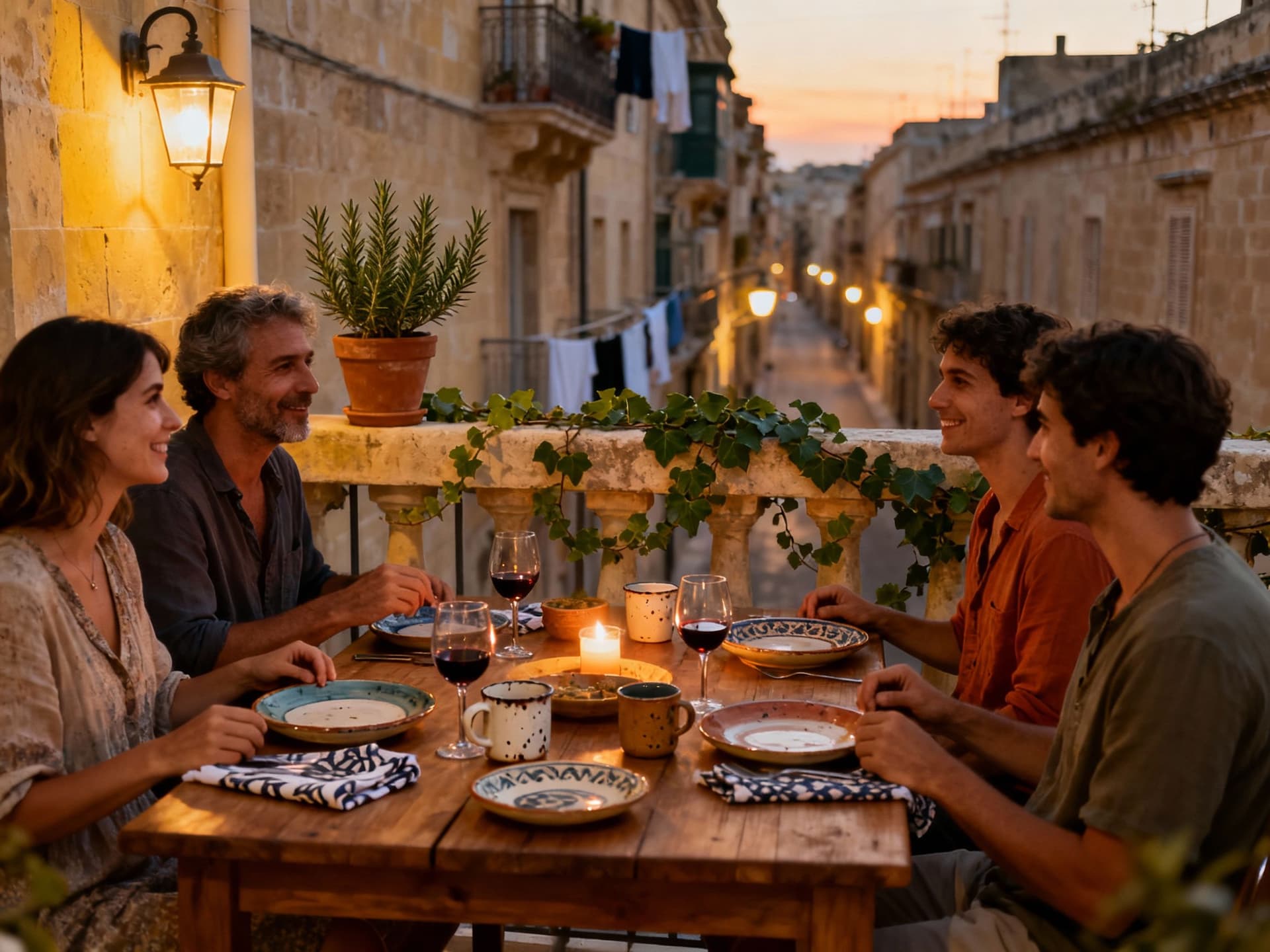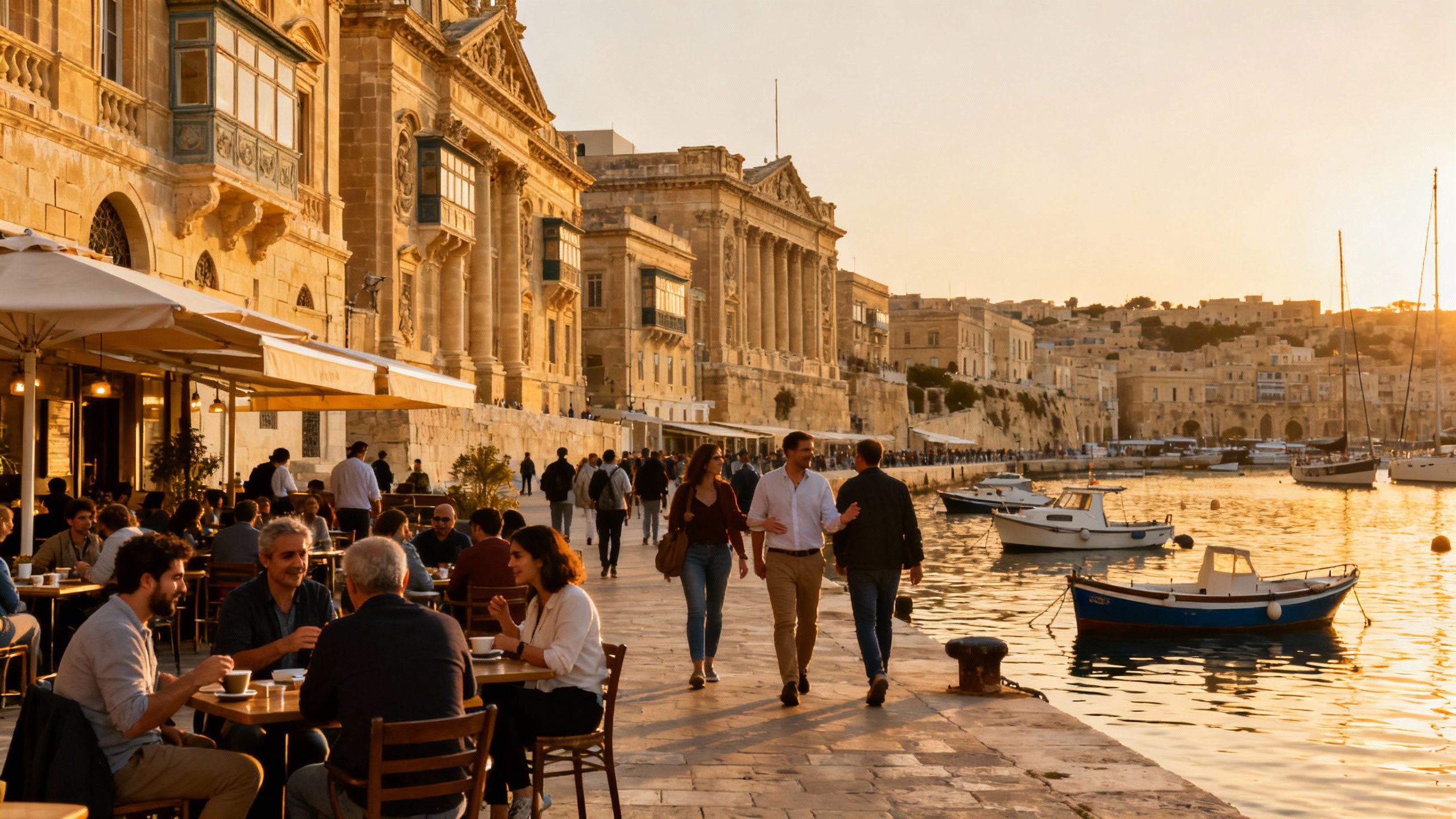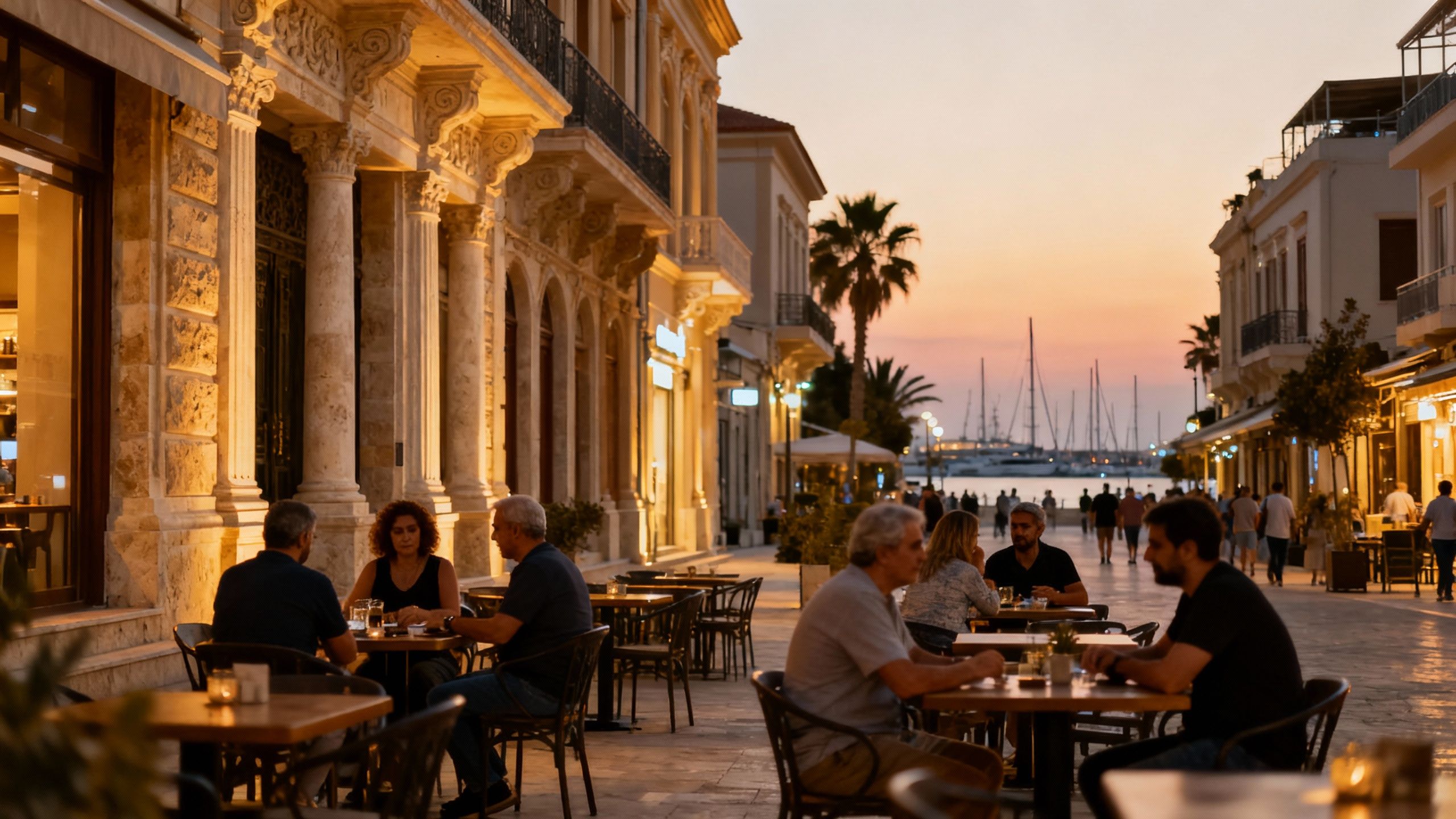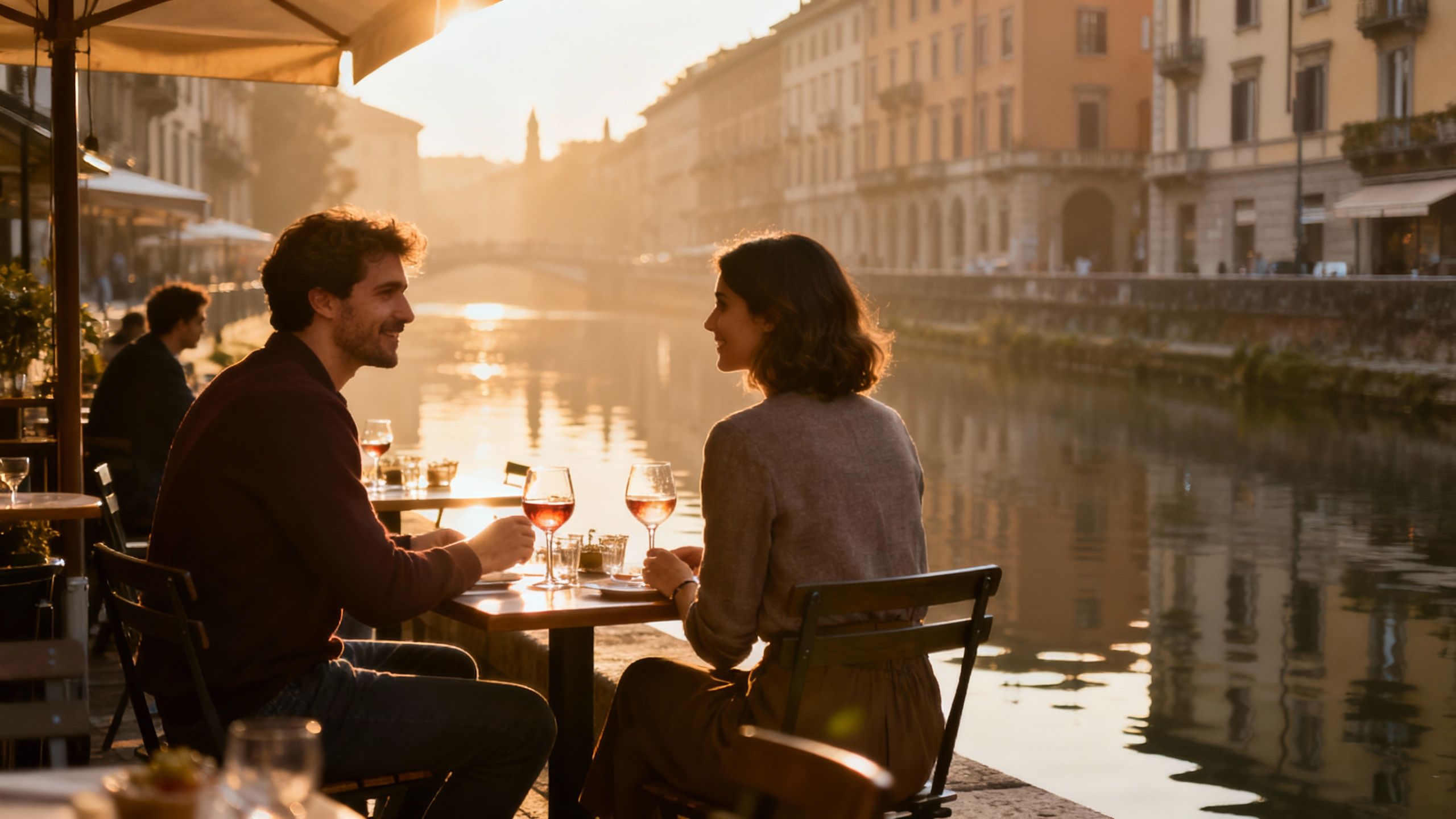Malta’s Quiet Corners: Value Where You Least Expect It
Malta’s daily rhythms and compact scale hide neighbourhood value—seek quieter pockets like Gzira or Msida and pair lifestyle choices with NSO-backed market checks.
Imagine stepping out at dawn to an espresso at Caffe Cordina, the limestone façades of Merchant Street still holding the night's cool, while fishermen in Marsaxlokk mend nets the other side of the island. Malta compresses centuries into a single walk—baroque churches, narrow paseos, and harbours that frame daily life. For many international buyers the romance precedes the ledger: the sunlit terraces, English widely spoken, and a compact scale that makes everything feel within reach. But beyond the romance there are subtle trade-offs—seasonal rhythms, neighbourhood micro-markets and steady price growth—that shape whether the move becomes a delight or a long lesson in stewardship.
Living the Malta life

A day in Malta is a study in contrasts: mornings at Valletta’s quiet gardens, afternoons clinking plates on a Sliema terrace, evenings drifting past the lights of the Grand Harbour. Neighborhood character here is intimate — Sliema and St Julian’s hum with cafés and seafront promenades, Rabat and Mdina sit in a slower, more formal tempo, while the fishing village of Marsaxlokk offers Sunday markets and seafood that define the week. Public life is outdoors; even the quietest lanes feel social by evening. That intimacy is the island’s appeal and the reason many buyers trade square metres for proximity to life.
Valletta, Sliema, St Julian’s: distinct moods
Valletta rewards slow discovery: carved doorways, palazzo courtyards, and rooftops with harbor panoramas. Sliema favours a polished, cosmopolitan daily life—bakeries, waterfront promenades and smart apartments—while St Julian’s tilts toward leisure, fine dining and a younger international crowd. The distinction matters: a townhouse in Valletta offers a different daily choreography than a new-build penthouse in Sliema. When you choose neighbourhood, you choose tempo, and that choice informs what property type, layout and amenities will suit how you want to live.
Food, markets and small pleasures
The island’s culinary life is local and unapologetically Mediterranean: pastizzi from a corner bakery, fish at Marsaxlokk straight from the quay, and evening aperitifs on a rooftop terrace. Weekends pivot around markets—Marsaxlokk’s fish market is both theatre and provisioning—and Ta’ Qali’s craftsmen offer pottery and lace that speak of Maltese provenance. For buyers, those routines shape practical choices: a kitchen suited to market shopping, storage for seasonal produce, and outdoor space that extends living into the temperate months.
- Lifestyle highlights to seek when house‑hunting
- A shaded rooftop for evening entertaining (Valletta terraces are exemplary).
- A well-proportioned kitchen near natural light for market cooking and social mornings.
- Secure storage for bicycles and water sports kit if you plan coastal living (Sliema/Gzira).
Making the move: practical considerations

Malta’s market has been firm: official indices show residential prices rising year‑on‑year and continuing momentum into 2025, particularly for apartments and maisonettes. That growth suggests inventory-tight pockets, meaning the lifestyle you seek (sea views, period detail, quiet courtyards) can command a premium. Practical due diligence therefore must blend aesthetic taste with local market data: examine recent deeds in your chosen neighbourhood, check finish quality on older buildings, and understand the fluctuating demand for short‑term lettings if you plan to rent part of the year.
Property styles and how they shape daily life
Period townhouses offer generous rooms, thick limestone walls and internal courtyards that moderate heat—ideal for serial entertaining and intergenerational living. Modern apartments provide open plans, lifts and roof terraces that suit a lock‑and‑leave international life, but often come at higher per‑m² cost. Maisonettes sit between these extremes: they provide direct street access and private terraces at a relative value. Match the type to how you intend to use the property—full‑time residence, seasonal retreat or an investment with occasional personal use.
Working with local experts who know the island
- Steps where a seasoned local agent protects both lifestyle and capital: 1) map micro‑markets against your daily life—commute, schools, dining—then prioritise streets, not just towns; 2) verify recent final deeds and PoSAs to gauge true transaction values; 3) assess construction quality and any conservation restrictions on historic properties; 4) align taxes, residency paperwork and financing with a Maltese notary and accountant before signing. Each step balances living requirements with investment prudence, and it is the local agent who translates neighbourhood nuance into actionable offers.
Insider knowledge: expat truths and underrated pockets
Expats often speak of two surprises: first, how quickly a neighbourhood acquires its rhythm; second, hidden value in areas that tourists overlook. Districts like Gzira and Msida—once unfashionable—now offer a quieter harbour edge, easy access to business hubs and better value per square metre than Sliema, while still delivering lively cafés and short walks to the sea. For buyers seeking a life anchored to local routine rather than visitor spectacle, these pockets can be the most rewarding both stylistically and fiscally.
Cultural integration: language, community, rhythm
English is an official language, which flattens many practical hurdles: school enrolment, healthcare navigation and civic processes are comparatively accessible. That said, community integration usually follows local rituals—church fêtes, village festas and market mornings—and these are where friendships form. Expect a slower administrative cadence than larger European capitals and learn the local pacing: shops may close for siesta‑like breaks, and many social interactions occur in person rather than by email.
Longer term: stewardship and resale considerations
Owning in Malta is often a commitment to stewardship of place—maintaining limestone façades, respecting conservation zones and choosing materials that age well in a marine climate. Resale value rests on provenance and condition: authentic finishes, documented restorations and sympathetic modern interventions command discerning buyers. If you plan to rent, check local short‑let regulations and seasonal demand; if you plan long‑term residency, prioritise neighbourhood services and quiet continuity over transient attraction.
- Practical checks before an offer
- Confirm deed history and any pending planning applications for the building.
- Assess thermal performance and salt corrosion risks on fittings—Mediterranean exposure matters.
- Review community rules and service charges for shared buildings—these affect liveability and cost.
- A concise buying checklist
- 1. Shortlist streets, not just towns: spend mornings and evenings in them to feel the rhythm.
- 2. Request recent final deed prices for comparables within 100 metres of the property.
- 3. Commission a local engineer to check marine corrosion and historic fabric conditions.
- 4. Clarify residency, taxation and lettings rules with Maltese counsel before exchange of contracts.
Conclusion: Malta rewards those who choose with care. The island’s compactness and cultural depth make everyday life inevitably rich, but value is rarely obvious at first glance. Pair a lifestyle-led shortlist—rooftop suppers, market mornings, harbour walks—with measured, data-led due diligence and the result is a home that feels immediate and an investment that respects provenance. Begin with a few neighbourhood visits, bring a local agent who knows streets as well as statistics, and let the island reveal which corner will become yours.
Norwegian with years in Florence guiding clients across borders. I bridge Oslo and Tuscany, focusing on legal navigation, cultural context, and enduring craftsmanship.


